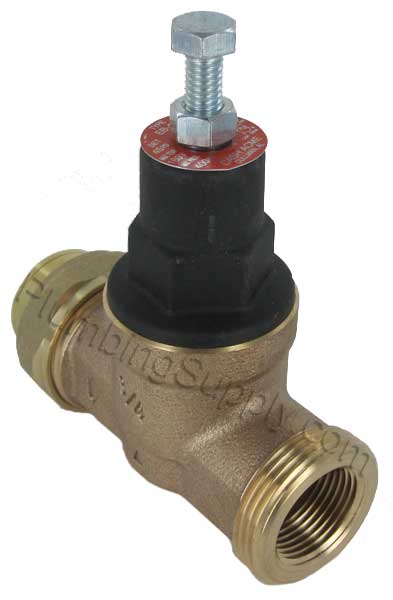Hello Everyone,
I have a gas water heater tank in my house, which does in fact have a Pressure Relief Valve from the side like most hot water heater tanks. Recently I have been noticing some water in the drip pan below the water heater. The water collects in the pan only when the water tank heater is on and heating the water. Above the hot water heater tank are two pipes, one for cold water which I think goes into the hot water heater tank and then another pipe which carries the hot water from the hot water heater tank (not sure if it matters, but these pipes are copper). On the cold water pipe which goes to the water heater tank, I noticed that there is a pressure vale of some sort. Unlike the main water line's pressure regulating valve, this one is not adjustable. Also this valve, which is somewhat in the shape of a "T" has an output line which is I think 1/2" PVC. I looked at my parent's place and my sister's place, but neither of their water tanks have a pressure regulating valve such as this which is connected to the cold water pipeline going into the hot water heater tank.
The water collected in the pan comes from this PVC piping, which is from the pressure regulating valve that is connected to the pipe providing cold water to the hot water heater tank. I noticed when the water is dripping from this PVC pipe, the copper cold water line pipe going to the hot water heater feels warm.
Any ideas on why the dripping occurs? Is this valve on the cold water line going to the hot water heater even needed? Just asking because a maintenance employee at one of my employer's offices said it is not needed and I could just plug it. I wanted to get some additional input before doing anything. Thanks!
I have a gas water heater tank in my house, which does in fact have a Pressure Relief Valve from the side like most hot water heater tanks. Recently I have been noticing some water in the drip pan below the water heater. The water collects in the pan only when the water tank heater is on and heating the water. Above the hot water heater tank are two pipes, one for cold water which I think goes into the hot water heater tank and then another pipe which carries the hot water from the hot water heater tank (not sure if it matters, but these pipes are copper). On the cold water pipe which goes to the water heater tank, I noticed that there is a pressure vale of some sort. Unlike the main water line's pressure regulating valve, this one is not adjustable. Also this valve, which is somewhat in the shape of a "T" has an output line which is I think 1/2" PVC. I looked at my parent's place and my sister's place, but neither of their water tanks have a pressure regulating valve such as this which is connected to the cold water pipeline going into the hot water heater tank.
The water collected in the pan comes from this PVC piping, which is from the pressure regulating valve that is connected to the pipe providing cold water to the hot water heater tank. I noticed when the water is dripping from this PVC pipe, the copper cold water line pipe going to the hot water heater feels warm.
Any ideas on why the dripping occurs? Is this valve on the cold water line going to the hot water heater even needed? Just asking because a maintenance employee at one of my employer's offices said it is not needed and I could just plug it. I wanted to get some additional input before doing anything. Thanks!










Comment